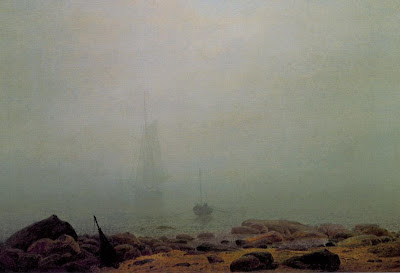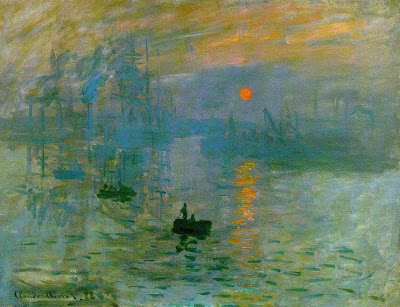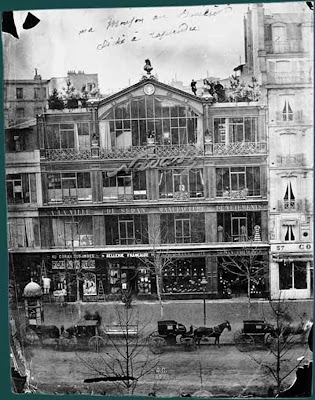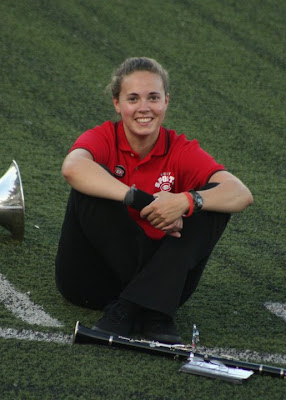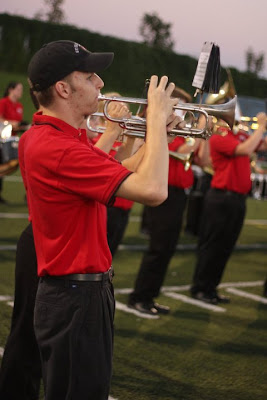He was, like Caspar David Friedrich, a Romanticist painter who was way ahead of his time, in my opinion.
British!
He had a very long, controversial career.
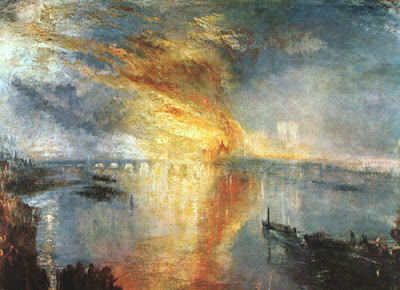
And he shares part of his name with a famous movie character.
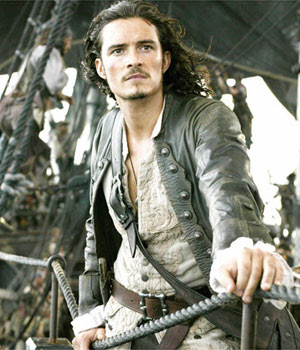 That's right... it's Joseph Mallord William Turner! (Sometimes just William Turner or J.M.W. Turner)
That's right... it's Joseph Mallord William Turner! (Sometimes just William Turner or J.M.W. Turner)Hello, Will!
Self-Portrait, c. 1799
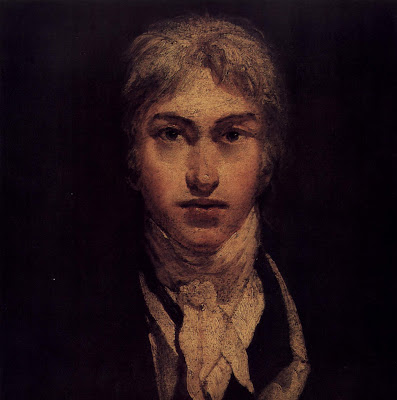
Turner was born in London, England, in 1775. A very ambitious chap, he was oftentimes considered (quite appropriately) to be a child prodigy considering that he was accepted into the Royal Academy of Art at age 14 or 15 and by 18 had his own studio.
He came from a well-off family, so he never had to work for money. This allowed him lots of leisure time to travel all over Europe to experience different places and study art, which he did during his twenties. Landscape painting was his specialty, but he painted other subjects early in his career, like the Salisbury Cathedral Seen from the Cloister (c. 1802).
 It is important to note that Turner had a few disadvantages as an artist. One, being British. England did not have the type of artistic history that, say, France or Italy had. Not even close. Oftentimes, British patrons commissioned artists from out of the country because it was difficult to find local artists who could do the job just as well. That was partly because England didn't have a Royal Academy of Art until 1768, more than a hundred years after France established its own Académie royale de peinture et de sculpture.
It is important to note that Turner had a few disadvantages as an artist. One, being British. England did not have the type of artistic history that, say, France or Italy had. Not even close. Oftentimes, British patrons commissioned artists from out of the country because it was difficult to find local artists who could do the job just as well. That was partly because England didn't have a Royal Academy of Art until 1768, more than a hundred years after France established its own Académie royale de peinture et de sculpture.Royal Academy of Arts, Burlington House, London. Established 1768.
 Second, landscape painting wasn't necessarily the cat's meow at the turn of the 19th century. Like I mentioned in my post/paper about the first Impressionist exhibition, landscape painting was considered inferior to history paintings, which were given the most attention and admiration.
Second, landscape painting wasn't necessarily the cat's meow at the turn of the 19th century. Like I mentioned in my post/paper about the first Impressionist exhibition, landscape painting was considered inferior to history paintings, which were given the most attention and admiration.So what did Turner do? He turned landscape painting upside down. It was no longer about capturing the picturesque -- he made it complicated by incorporating allegorical themes into his work. Also, his style was unlike anything anyone had ever seen before: very precise, dramatic, sharp brushstrokes... intense compositions and atmospheric effects... an interest in historical and contemporary events, some of which had very dark themes.
This is Snowstorm: Hannibal and His Army Crossing the Alps (1812). In this painting, Turner is associating Hannibal with Napoleon. Most of the emphasis, though, is on the vulnerability of the soldiers in the face of raw nature, which dominates the entire painting.

The Shipwreck, painted in 1805, possibly depicts a real event that occurred around the time. Turner loved the sea. He loved exaggerating the immense power and force of the waves against measly man-made ships. Again, he shows that humans are at the mercy of nature.
 Speaking of ships and the sea, here is one of Turner's most famous and controversial paintings, completed in 1840: Slavers Throwing Overboard the Dead and Dying - Typhoon Coming On or simply The Slave Ship. It is based on the horrifying (but true) practices of 18th-century slave traders, who would throw the dead and dying slaves overboard in order to gain insurance for drowning. (They would not be able to get insurance if the slaves died on the ship.) It's about man against the brutal forces of nature and the brutal forces of mankind. See how Turner used color and a dynamic composition to emphasize the emotional appeal of the subject as well as the actual landscape.
Speaking of ships and the sea, here is one of Turner's most famous and controversial paintings, completed in 1840: Slavers Throwing Overboard the Dead and Dying - Typhoon Coming On or simply The Slave Ship. It is based on the horrifying (but true) practices of 18th-century slave traders, who would throw the dead and dying slaves overboard in order to gain insurance for drowning. (They would not be able to get insurance if the slaves died on the ship.) It's about man against the brutal forces of nature and the brutal forces of mankind. See how Turner used color and a dynamic composition to emphasize the emotional appeal of the subject as well as the actual landscape.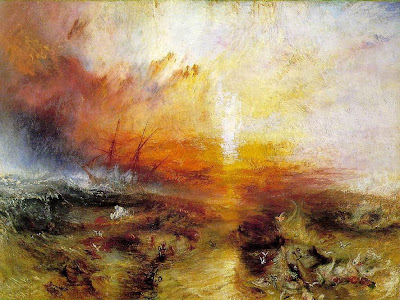 It is no surprise that Turner's Slave Ship was not well-received by the public. Too graphic and too abstract. Mostly the latter. This was later in Turner's career when he actually used his fingers as well as brushes to apply paint to the canvas.
It is no surprise that Turner's Slave Ship was not well-received by the public. Too graphic and too abstract. Mostly the latter. This was later in Turner's career when he actually used his fingers as well as brushes to apply paint to the canvas.A couple more examples of his later work:
The Burning of the House of Lords and Commons, 16th October, 1834 (1834-35)

Rain, Steam, and Speed: The Great Western Railway (1844)
 Towards the end of his career, Turner moved into almost abstraction, as indicated in the above painting. He became a major influence of the Realists and the Impressionists. His works now sell for millions of dollars. (Case in point, the most recent one which was sold this July, went for $44.9 million.)
Towards the end of his career, Turner moved into almost abstraction, as indicated in the above painting. He became a major influence of the Realists and the Impressionists. His works now sell for millions of dollars. (Case in point, the most recent one which was sold this July, went for $44.9 million.)So... did anyone else notice any similarities between J.M.W. Turner and William Turner from Pirates of the Caribbean? I mean, their fathers were both named William Turner. They're both British. Both loved the sea and spent a lot of time around it...
That only leads me to ask... could J.M.W. Turner have been a pirate?! The world may never know...






